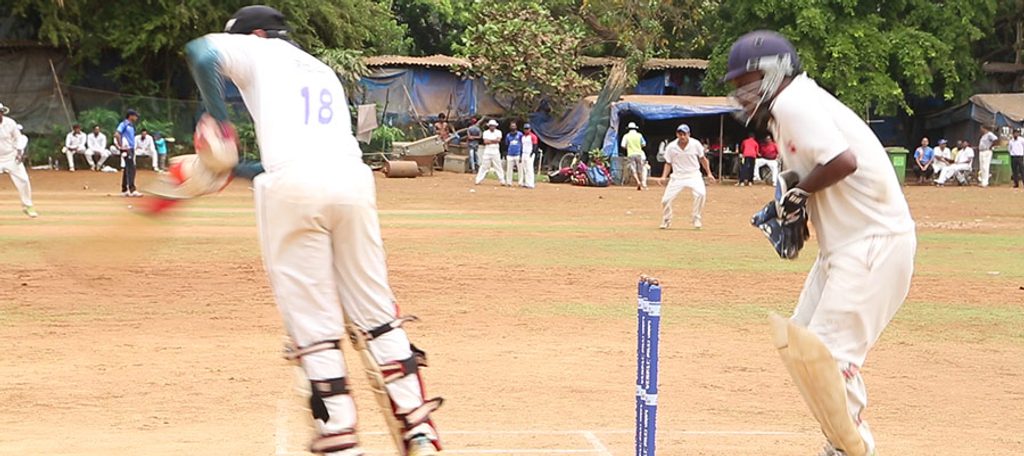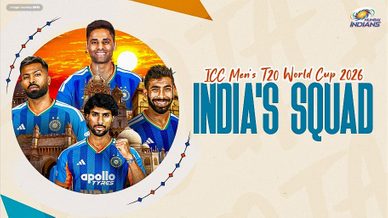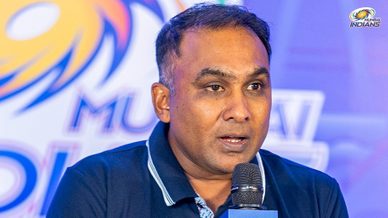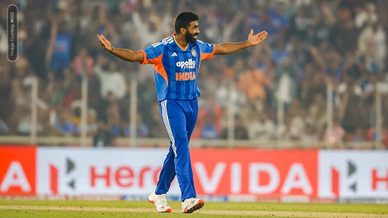
Cricket’s monsoon romance
Mumbai – whenever someone comes to the city, all they can think about is ‘City of Dreams!’ People come here driven by high hopes of making it big. It’s known as a city that never sleeps and it also carries a rich tradition when it comes to cricket. Mumbai and cricket go hand-in-hand. You’ll see youngsters playing cricket on almost every street in every season, be it summer, monsoon, or winter. It’s a cricket crazy city where almost everyone aims to make it big in the sport.
Azad Maidan and Shivaji Park are the breeding grounds of Mumbai cricket. We’ve seen many great players cultivate their game at these venues. There is a different type of romance when it comes to Mumbai and cricket. It is followed vividly by people of all ages and that’s evident when there’s any cricket match going on. Hordes of supporters would rush to the nearest television screen – be it at a mall, at a pub, or even outside electronic stores. When you walk past Azad Maidan or Shivaji Park, seldom will you not see a bat and ball in action. And when it’s monsoon, youngsters on the streets are seen having a great time playing cricket.
On the Mumbai local – the lifeline of the city, you will see club cricketers carrying their kitbags through crowded trains and always in a rush to make it to the nets or any club match. Mumbai’s rich cricketing heritage is on display at the trophy cabinet in the Ranji Trophy. The team has a glorious record having lifted the cup a record 41 times, while the second-most titles won by a team is just 8. It shows the gap between Mumbai and other teams in India. Anything other than winning the title in the Ranji Trophy is considered disappointing for the Mumbai team. Players like Sunil Gavaskar, Sachin Tendulkar, Polly Umrigar, Dilip Vengasarkar, Vijay Merchant, Dilip Sardesai, Zaheer Khan, Ajit Agarkar and many more have come from Mumbai and made it big in the international circuit.
Mumbai rains and cricket have history too. If cricket is a summer game, then in Mumbai you will see a tournament which is played only in the monsoons. It’s known as the Kanga League – a one of a kind tournament. As one would assume, it is extremely tough to play in such conditions. The ball stops, shoots, skids and swings – all in a day’s play. When it becomes dry then it doesn’t get any easier for batsmen. Once you get the experience of batting in such conditions, you know you can crack it in the international arena. It was here the Khadoos batting term of Mumbai emerged from.
The Kanga League would produce Test batsmen like a conveyor belt. The Mumbai batsmen are known as Khadoos because they go and bat on tough, drying wickets. Batting in these conditions also puts your mental capacity to the test with players coming away from the experience even more headstrong. If you have the experience of batting on such wickets, then you are ready to face anything that comes your way.
The Kanga League originated in 1948 and was named after cricketer Hormasji Kanga. He was the first Indian to score a double century in a First-Class match. Since then, the league has become an integral part of the Mumbai cricket circuit. The 2013 and 2014 Kanga Leagues were scheduled at the end of the monsoon season, but the league was moved back into the monsoon season in 2015. The legendary Sachin Tendulkar, aged 11, appeared in the league representing John Bright Cricket Club, and in 1985/86, he played the whole season at the age of 12. There are some famous names in this league such as Madhav Apte, who played in every Kanga League between 1948 and 2002. Wicket-keeper Mehli Irani played in the Kanga League for 50 years, retiring incredibly at the ripe age of 68.
A batsman scoring 30 or 50 is considered the equivalent of 80 or 100 in Kanga Leagues. The tournament doesn’t offer the most convenient conditions to play cricket – bowlers step over puddles in their run-up whereas fielders and umpires have mud splashing on their faces and thus affecting their vision when the ball bounces in front of them. There is a unique romance to this format. Rain-break forces players to go back to their tents and sip on some tea in anticipation of the game’s resumption. Like most things in Mumbai, cricket also gets its romance.
“The average Indian batsmen was not really exposed to wet wickets, turning wickets or drying wickets. To experience such conditions, the ideal time were the monsoon months.” Apte summed up why the tournament is played during this period.
Milind Rege, former Mumbai captain, says these four months used to give players a head-start in national tournaments. Numbers back it as in 26 seasons of Ranji Trophy ranging from 1951 to 1977, Mumbai became champions on 22 occasions. The players used to participate in the league even if they were returning from an international tournament or before any international game. Once Sunil Gavaskar, fresh off his double ton in England, went straight to play for Dadar Union in a Kanga League match. Apte often gave the League precedence, “I would schedule my visit to India in such a way that I could play Kanga League matches.”
Kanga League’s importance kept growing further. It grew so much that selectors started picking Ranji players on the basis of their Kanga League form. Things have changed over time, though.
Wickets have started getting flatter around the world but the importance of Kanga League wickets remains sky high as it demands a technique of its own. This tournament improves players mentally and prepares you for new challenges every single time. It holds a special place in Mumbai cricket.
In Mumbai, grounds in monsoon won’t be vacant. More often than not, you’ll see a cricket match going on. That is the aura and significance of this city. A win domestically, is as sweet as an international triumph. It was started to develop technique to play in English conditions, it ended up offering much more than it was supposed to be. The Kanga League has been etched in Mumbai’s rich cricketing folklore forever.





